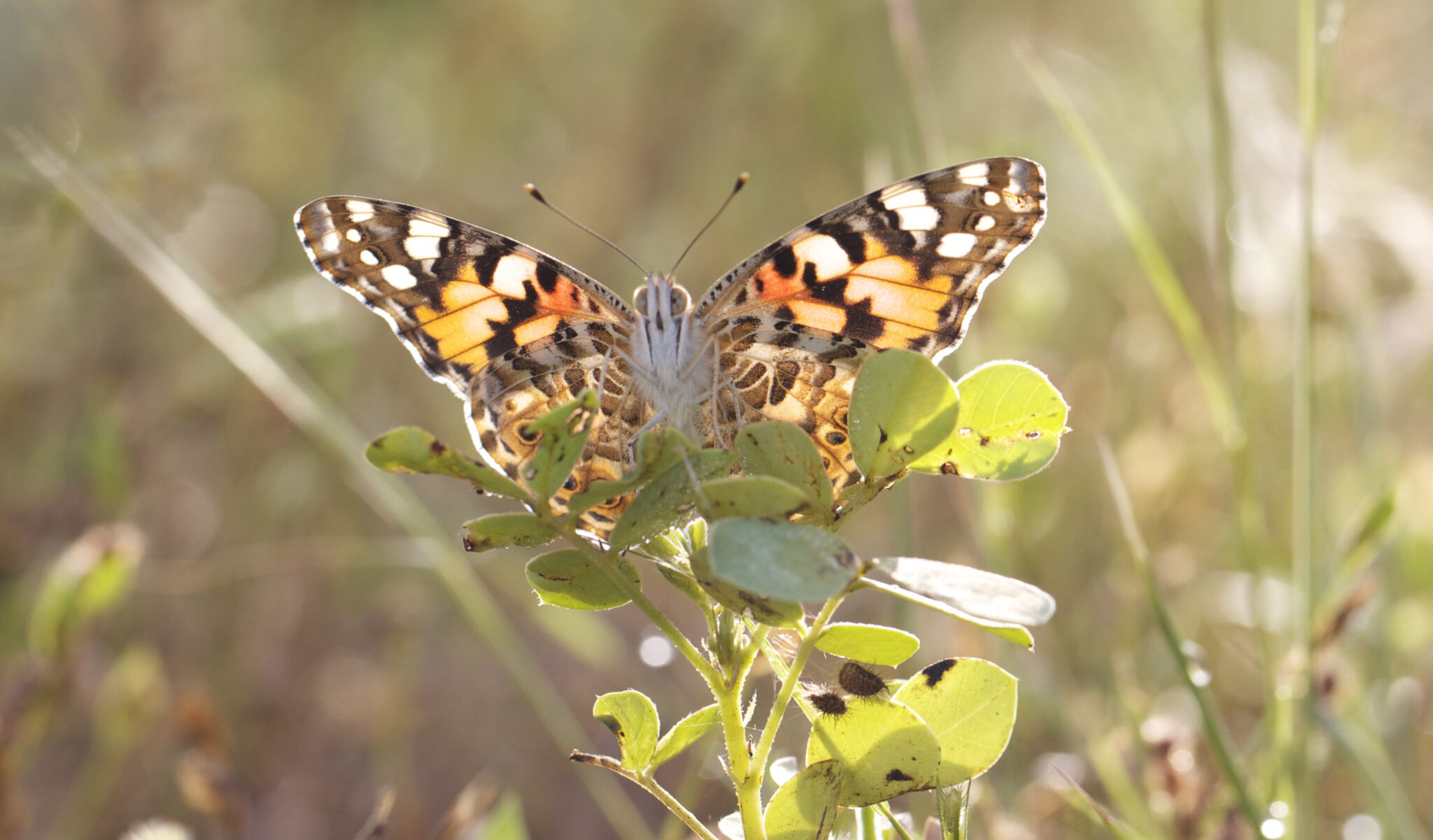An international team led by the Higher Scientific Research Council (CSIC), an organization dependent on the Ministry of Science, Innovation and Universities, has transoceanic flight of more than 4,200 km performed by cardera butterflies (Vanessa Cardui), which is a record for an insect. The study, published in the journal Nature communicationdocuments a journey that lasted between five and eight days, made energetically possible thanks to the help of the Elysian winds.
Researchers from the Barcelona Botanical Institute (IBB), a joint center of the CSIC and the Consorci Museu Ciències Naturals of Barcelona, are participating in the work, as are the W. Szafer Botanical Institute (Poland), the University of Ottawa (Canada). ), the Institute of Evolutionary Biology (IBE, CSIC-Universitat Pompeu Fabra) and Harvard University (United States).
In October 2013, researcher from the CSIC’s Barcelona Botanical Institute Gerard Talavera identified several cardera moths (Vanessa Cardui) on the Atlantic beaches of the French Guyana. These sightings were completely unusual, as this species does not occur in South America. Where did they come from?
Innovative techniques solve the riddle of cardera butterflies (Vanessa Cardui)
Thanks to a multidisciplinary approach, we have been able to decipher its route and origin cardera moths (Vanessa Cardui). The two assumptions were that they could have been born in North America, where the closest populations occur, or in Africa or Europe. By analyzing wind paths, the researchers observed a persistent directional pattern from West Africa, raising the possibility that they had crossed the Atlantic Ocean.
By studying the genetic diversity of butterflies, which required collecting samples from populations from all continents, the researchers determined that the specimens observed in South America were related to populations in Europe and Africa, which in turn raised the possibility of an origin in North America. . The researchers also analyzed the DNA of the pollen containing the cardera moths (Vanessa Cardui) carried on their bodies and identified two species of plants found only in tropical Africa, showing that butterflies visited flowers in that region.
Finally, the team analyzed the stable isotopes of hydrogen and strontium from the wings cardera moths (Vanessa Cardui). The wings retain isotopic signals typical of where they were raised in their larval stage, allowing us to infer their natal origin. With this data, they determined that its origins were most likely in Western European countries such as France, Ireland, the United Kingdom or Portugal.
“Las cardera moths (Vanessa Cardui) they came South America from West Africa, flying at least 4,200 km across the Atlantic Ocean. But their journey could have lasted even longer, starting in Europe and passing through three continents, amounting to a migration of 7,000 km or more. This is an extraordinary milestone for such a small insect,” explains Clément Bataille, professor at the University of Ottawa in Canada and co-author of the paper.
“We normally see butterflies as a symbol of the fragility of beauty, but science shows us that they can perform incredible feats. There is still much to discover about its potential,” emphasizes Roger Vila, researcher at the Institute of Evolutionary Biology (CSIC-Universitat Pompeu Fabra) and co-author of the study.
Cardera butterflies (Vanessa Cardui) travel with the help of the wind
The researchers modeled the energy costs of the journey and estimated that the flight across the ocean, without stops, took between 5 and 8 days. Energetically this was possible because it was made possible by favorable wind currents. “The cardera moths (Vanessa Cardui) They could only have completed this flight using a strategy that alternated between minimal efforts to avoid falling into the sea, facilitated by rising winds, and active flight, which requires greater energy expenditure. We calculate that, without wind, the cardera moths (Vanessa Cardui) They could have flown a maximum of 780 km until they had used up all their fat and therefore also their energy,” says Eric Toro-Delgado, one of the authors of the paper.
The researchers emphasize the importance of the Saharan air layer as a potential highway for airborne spread. These wind currents, which prevail year-round, transport large amounts of Saharan dust from Africa to the Americas and participate in important biogeochemical cycles. However, the proportion of transported biological components, including living organisms, needs to be studied in depth.
Migrations in the context of climate change
This finding indicates that there may be natural air corridors connecting continents that could facilitate the spread of species on a much larger scale than previously thought. “This discovery opens new perspectives on the ability of insects to disperse over long distances, even across seas and oceans. It is possible that we underestimate the frequency and impact that these movements have on our ecosystems,” says Gerard Talavera, leader of the study.
“Throughout history, migration phenomena have been important in defining the distribution of species as we see them today,” he adds.
The research staff emphasizes that, with the global warming and changing weather patternsfurther changes and even an increase in this long-distance dispersal are likely to be observed, which could have significant consequences for biodiversity and ecosystems around the world.
“It is essential to promote systematic monitoring routines of dispersing insects, which could contribute to predicting and mitigating potential risks to biodiversity from global changes,” Talavera concludes.

